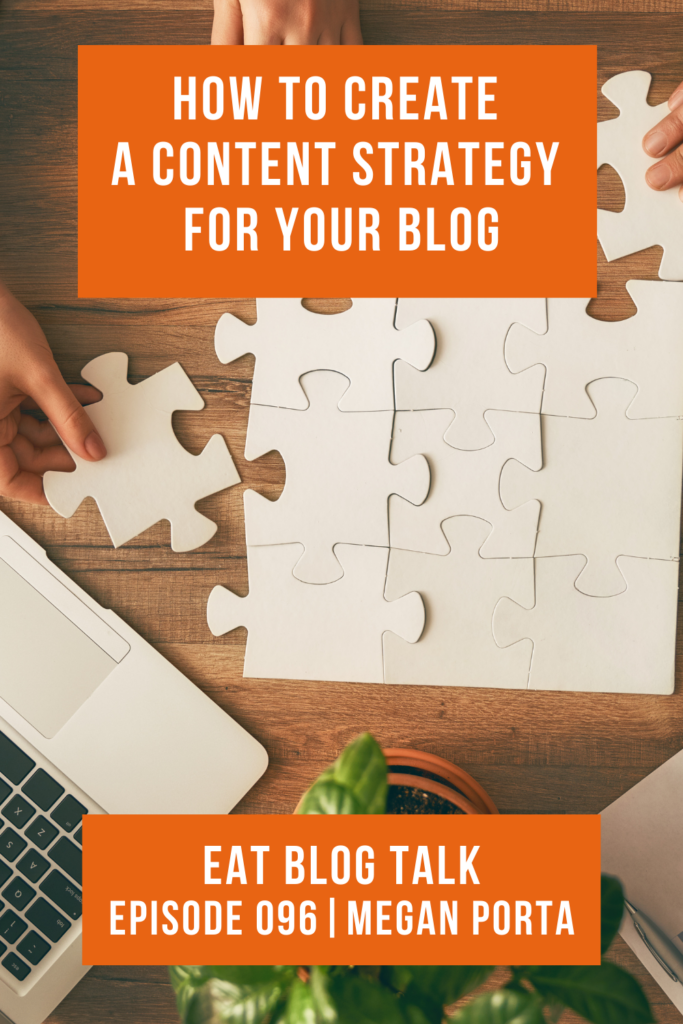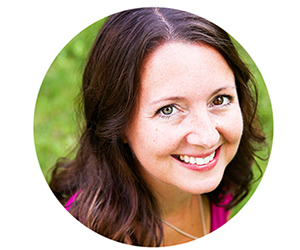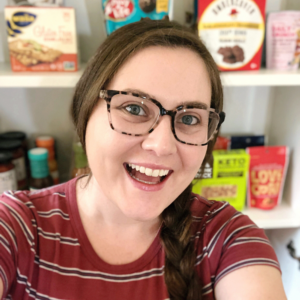In episode 096, Megan talks to us about how having a content calendar helps us create a raving audience, more traffic and more money!
We cover information about how to ensure you are working on projects and creating recipes that will bring in people, help you focus on the topics that connect to your niche and give you a FREE content strategy guide to get you started.
Listen on the player below or on iTunes, TuneIn, Stitcher, or your favorite podcast player. Or scroll down to read a full transcript.
Write Blog Posts that Rank on Google’s 1st Page
RankIQ is an AI-powered SEO tool built just for bloggers. It tells you what to put inside your post and title, so you can write perfectly optimized content in half the time. RankIQ contains a hand-picked library with the lowest competition, high traffic keywords for every niche.
Takeaways
- Content for a food blogger is photos, graphics, recipes, artwork or video, or any combination of those.
- Having a strategy for coming up with and managing content is an essential part of being a food blogger because we create A LOT of content.
- Avoid wasting time and energy on wrong projects and recipes.
- Learn how to serve your audience effectively. Don’t work harder, work smarter.
- Pinpoint an amount of weekly content you are going to post on your blog for the next 3 months.
- Define your Ideal Customer Avatar (ICA) and understand what he/she needs from you.
- Write a list of recipe and topic ideas your ICA might be needing from you.
- Define your own passions related to your niche.
- Make a list of food that will be in season and that people are likely to have access to.
- Find common topics that exist in all 3 categories and plug those into Google Trends.
Keep Getting To Know Your Audience
If you need a content calendar strategy, check out episode 102 where Megan walks you through how it’ll help you get organized and know what content to produce.
What is Content Strategy?
Content Strategy refers to the strategic planning, creation and management of the content produced and shared on various platforms (social, blog, email).
For food bloggers, “content” includes the writing you produce and also photos, graphics, recipes, artwork or video.. or any combination of those.
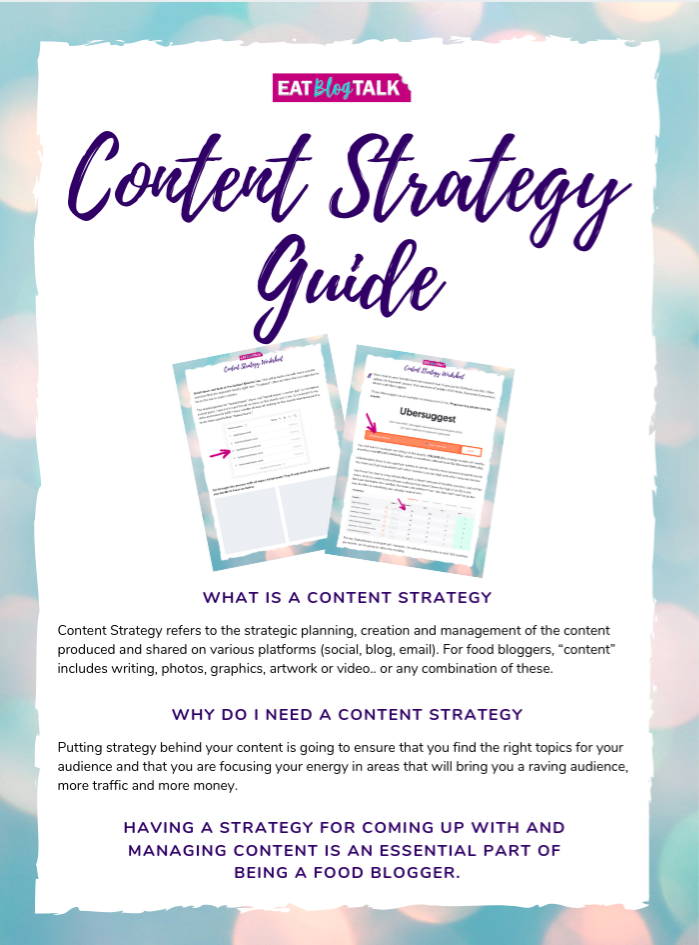
Why is it important to create a content strategy?
Having a strategy for coming up with and managing content is an essential part of being a food blogger because we create A LOT of content. We are also mostly creative individuals who have tons of ideas. Plus we enjoy an array of delicious food, making it easy to get distracted by creativity and flavors.
Putting a strategy behind your content creation is going to ensure that you find the right topics for your audience and that you are focusing your energy in areas that will bring you a raving audience, more traffic and more money. All things we want, right?
I am speaking from experience here.. There was no rhyme or reason to the content I created for the first EIGHT YEARS of blogging and in retrospect, I wasted a LOT of time and energy on very wrong projects and recipes during that time.
Hopefully you’re not 8 years in and making the same mistakes, but if you are.. NOW is always a good time to turn things around and dive into being strategic!
The Benefits of Creating an Effective Content Strategy
What a Content Strategy Will Do for Your Business
An effective content strategy will impact your business in the following ways:
- It will help you to focus on the topics that are going to serve your audience.
- You’ll have the focus to spend your precious time and energy on projects that are going to help you grow a raving audience, it will increase the amount of traffic you get and the money you make.
How to Create a Content Strategy for Your Blogging Business
Grab the free guide from the form on this page. In the guide you will find examples and fillable blocks so you can brainstorm and type out ideas as well as any research you do.
1. Pinpoint an amount of weekly content you are going to post on your blog for the next 3 months. Consider both new content and updated content from your archives. Whether that’s 1 post/week or 6, you need to decide on a number of weekly content you will be publishing.
2. Define your Ideal Customer Avatar (ICA) and understand what he/she needs from you. If you’ve filled out the Avatar Creation Guide, you already have all of this information. If you haven’t, I highly recommend doing that because then you will have a VERY clear picture in your head of your ICA and it’ll be really easy to describe his or her needs in a couple sentences.
3. Thinking ahead to the next 3 months, write a list of recipe and topic ideas your ICA might be needing from you. Step into your ICA’s shoes as you write this list out and you can be a little bit generic with this list. I provided an example list in the Content Strategy Guide that you can peek at for ideas.
4. Define your own passions that relate to your niche. Thinking ahead to the next 3 months, write a list of recipe and topics ideas that make you excited to be a food blogger and that you just really really want to blog about. I provide examples in the guide for this, as well.
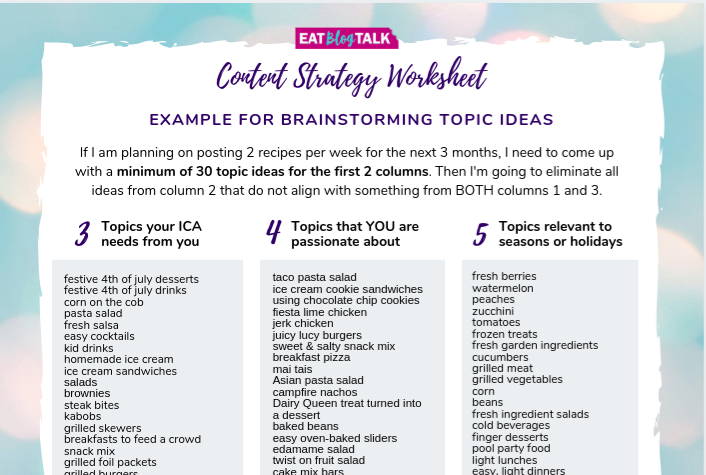
5. Thinking ahead to the next 3 months, make a list of food that will be in season and that people are likely to have access to. Consider upcoming seasons, holidays and any other variables that might have an impact on ingredients.
6. Find common topics that exist in all 3 categories. If you come up short, browse favorite sites and Pinterest for inspiration and start the process over for more ideas! With this section, too, I provide examples in the guide..
7. Plug each of those topics into Google Trends. Click on the 5-year view (default is 12-month) and see if historically it is a good time of year to post on this topic.
Also peek at the Related Queries that might be trending that relate to your topic. If one of the popular queries under your more broad keyword fits your niche and cooking style, pick it!
An example would be: If my search term is “baked beans” but under Related Queries I see that popularity for “Instant Pot Baked Beans” is on the rise, I’d be likely to use that key phrase instead because it is more specific than “baked beans” and I also love cooking with my Instant Pot so it aligns with my content and niche.
8. Now take your key phrase and bring it over to your favorite keyword research tool to do further research. You’ll want to find a key phrase with a high search volume (but not too high!) and SEO Difficulty (SD) that isn’t too competitive. There is no hard, fast number to find for either of these, but the more you research key words the more quickly you’ll kind of understand where you should be at and what you’ll need to look for. I talk about this within the guide..
9. Research top competitors who rank for your key phrase. For this step, simply you’re your key phrase into Google and focus on the top 3 links that pop up. Click over and evaluate each post and determine how YOU can make your content even better. Within the guide I provide a list of things you should look for as you browse through competitors’ content.
10. Put topics into an editorial calendar and make a plan for creating and posting upcoming recipes. If you already have an editorial calendar in place and operational, great! If not, create one here!
When is a good time to create a strategy for your blog?
Now!
Go on!
What are you waiting for? Your business needs this!
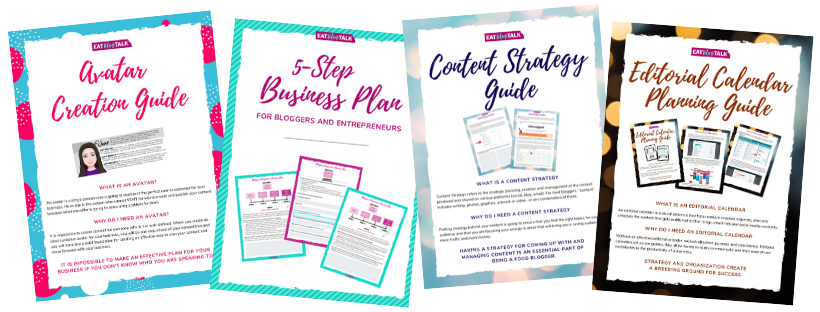
Guides That Will Help You Grow Your Business!
In order to launch your business into a new realm of success, complete the guides below in the following order:
- Avatar Creation
- Business Plan
- Content Strategy
- Editorial Calendar
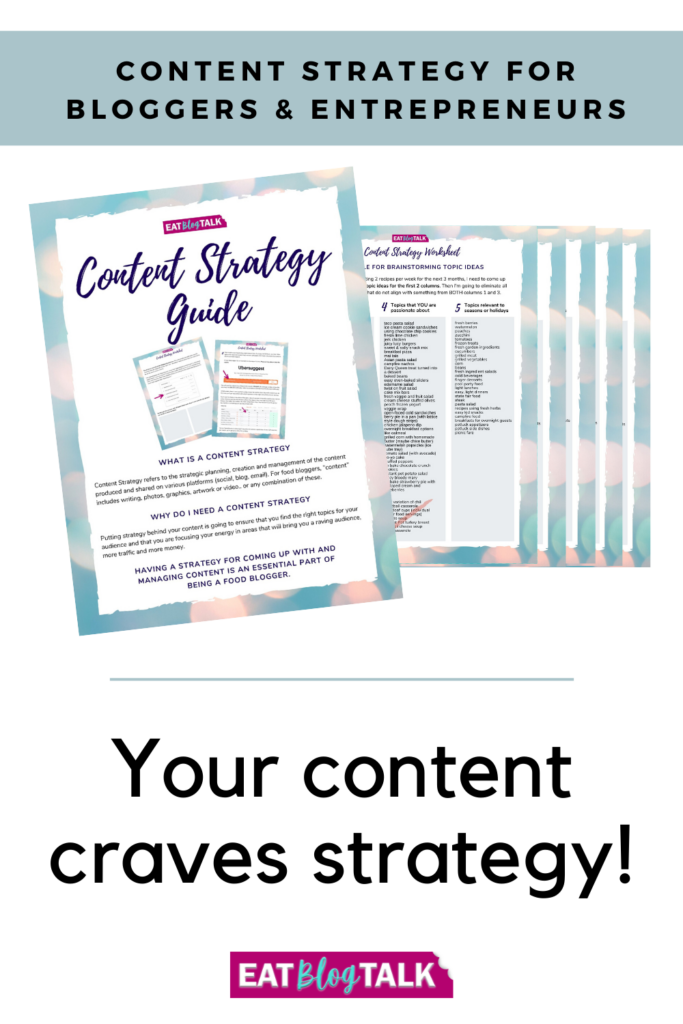
💥 Join the EBT community, where you will gain confidence and clarity as a food blogger so you don’t feel so overwhelmed by ALL THE THINGS!
📩 Sign up for FLODESK, the email service provider with intuitive, gorgeous templates and a FLAT MONTHLY RATE (no more rate increases when you acquire subscribers!).
Read this post about why I switched from Convertkit to Flodesk!
